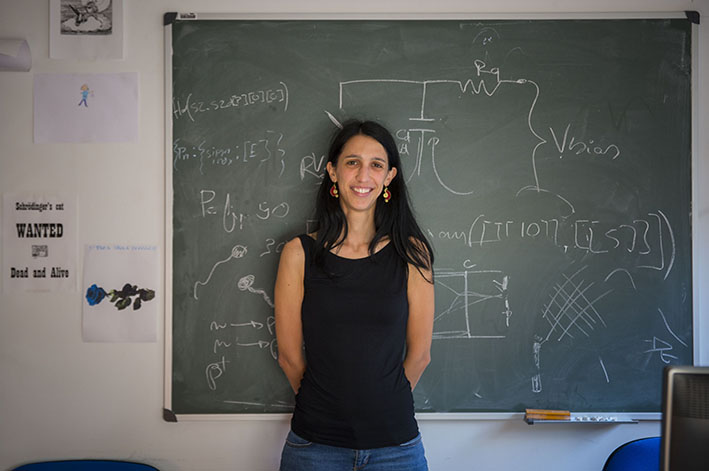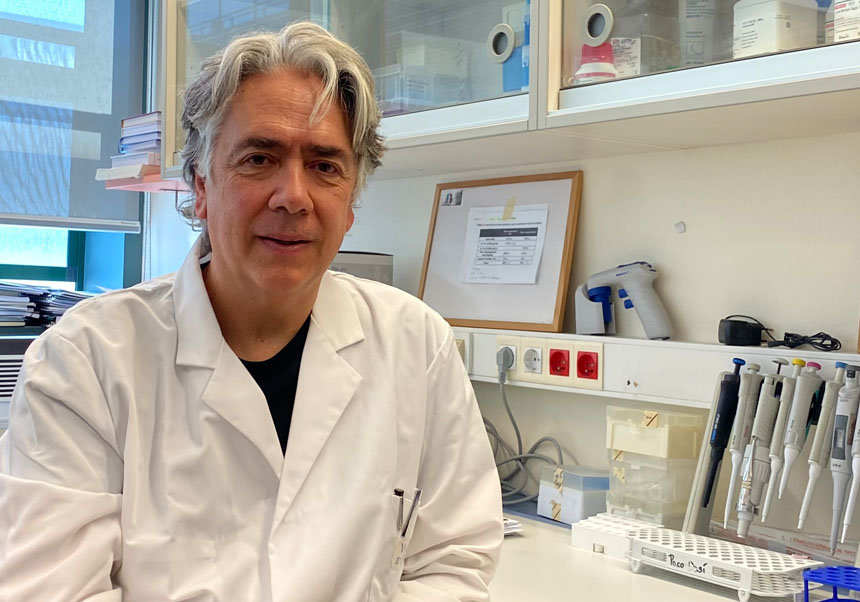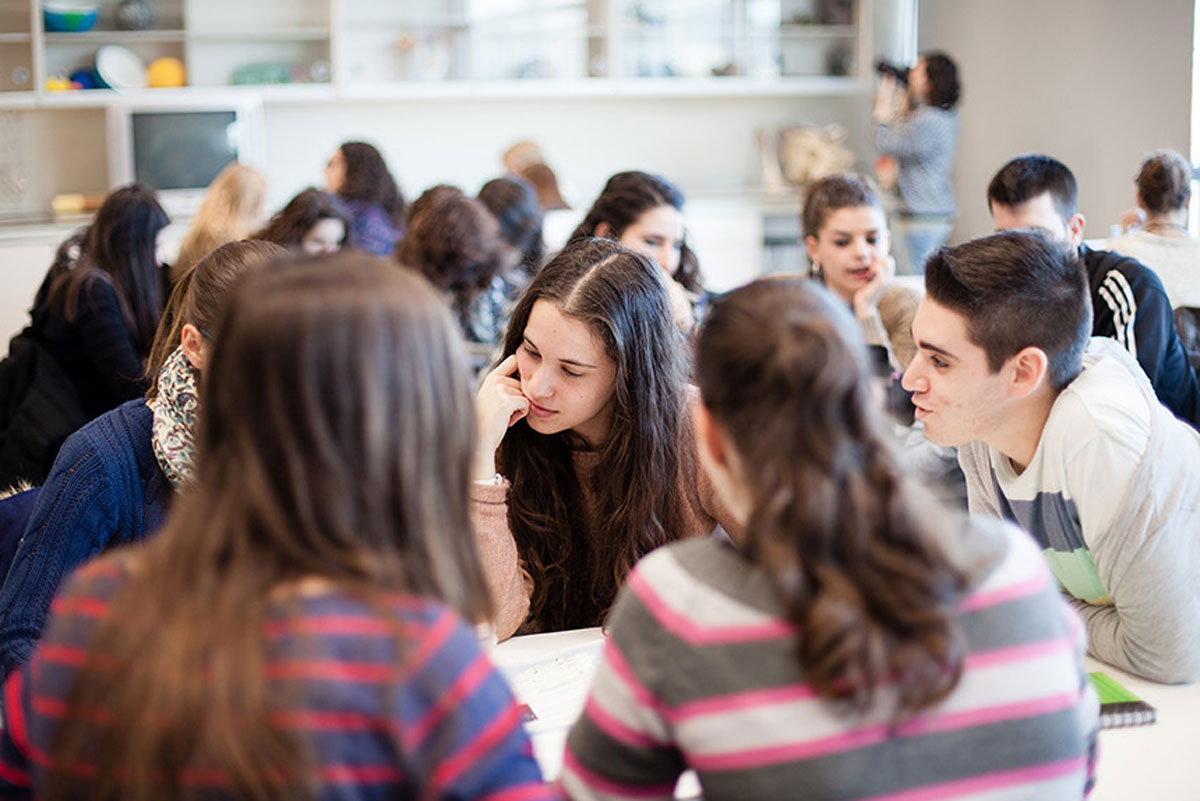Paola Ferrairo, awarded with a Starting Grant: “Particle physics woke me up to the construction of a more precise medical scanner "
- November 2nd, 2017

María Iranzo
With her fluency in Spanish, physicist href="http://webific.ific.uv.es/web/content/ferrario-paola">Paola Ferrario (Milà, 1980) Paola Ferrario (Milán, 1980) leave proof of her more than ten years in our country. She landed at the Institute for Corpuscular Physics (IFIC) in 2006 at the hands of CSIC (Spanish Research Council), who awarded a grant to her in order to undertake a PhD along with the professor of Theoretical Physics Germán Rodrigo. After that work focused in phenomenology, in 2010 she took the leap to the experimental physics that carry out the NEXT project, in order to go in depth into medical physics. The mattress that has driven her in this last jump is renowned: una Starting Grant de la European Research Council. This aid of 1.5 million euros during five years will be fundamental to carry out the project which has been given the name of PETALO.
–If I were your grandmother, how would you explain what PETALO is?
–[Smile devising the situation] PETALO is an application to nuclear medicine of the technology that has been developed in the NEXT project. It is a new concept to construct scanners detectors based on positron emission tomography (PET). This is a diagnostic imaging technique that allows to scan Metabolic activity of the body. Is it used generally in most of the hospitals. And what does it consist of? First, the patient is injected a modified glucose molecule, modified because an atom has been replaced by an atom of a radioactive isotope. One that is often used is fluorine 18. This isotope emits a positron when beta + decays. And this positron is annihilated with an electron from the patient's body. From this annihilation two photons come up in opposite directions of which we will measure the trajectory [while she explains it to me, it is expressed in drawings on the blackboard that she has behind the work table, in the experimental room of the IFIC]. There where the body metabolic activity is higher, in other words, where it is consumed more glucose, it is usually the area affected by a tumour. This technology also allows us to detect neurological diseases where brain activity means a great consumption of glucose. In fact, it is surprising to observe the differences between brain activity of a person affected by Alzheimer’s disease compared to that of a healthy person.
–So, What is the novelty of your project?
–Motion detectors of this photons are, until now, crystals that emit light when the photon arrives. Then, these relatively modern sensors such as silicon multipliers can reconstruct the image of this activity. But what PETALO intends is to use xenon in liquid form instead of these crystals and sensors. Liquid xenon emits light in a much shorter time than crystals, and this offers a rather high temporal precision that allows to calculate more quickly the time that the photons arrive at the sensors and, therefore, to identify better the image.
In this sense, there are two main advantages applied to medicine: you identify tumors more quickly and at an earlier stage, while this allows you to put less radiation dose to the patient. We are talking about more dynamic scanners that offer better contrasts in the image.
–I suppose that you will not disassociate yourself from the NEXT research, from which your project drinks.
–Of course not! I will collaborate with NEXT because there are many overlapping of technology. For that reason, I will continue exchanging experiences with them During the last two years what we have done together is the conceptual study; we have published scientific articles have been very valuable in the granting of this European aid. My goal now is to construct a prototype and to prove that it works. It is not easy to bring technology to medical field. Doctors are usually conservative and it is, therefore, a challenge to demonstrate and convince them that the project works. The last phase, to which i do not know if I will arrive with PETALO, is to construct a device that can be taken to the hospital.
–Summarising...
–I want to build a ring of detectors and prove that I can reconstruct the image of an object placed inside. The first step is to use a source of calibration to demonstrate that you know to rebuild a point, with an excellent resolution in energy, position and time. Afterwards, I will work with phantoms, for instance a cylinder that you fill with radioactive substance and that you are able to rebuild again. And in a third phase will come a preclinical PET with small animals. However, I think that this last phase is beyond the PETALO project. First thing is to show that the idea works, and after that the rest.
–Have you think of work in medical physics?
–Medical physics and diagnostic imaging are very linked to particle physics. I had never considered this field of research, but the truth is that I find it very interesting to do something that directly impacts society for the better.
–Who woke you up?
– My boss, Juan José Gómez Cádenas, who lead NEXT. When you have a lot of experience, as it is his case, you see easily other ramifications and possible application. In fact, he already has a patent. Thanks to his orientation, I have spent this time demonstrating conceptually, on paper, that it was a good idea. And now I dare to develop it.
He does not dare to confirm to me where the project will be carried out, for which several researches have expressed interest in participating. Just a few weeks ago he arrived from California, where he has been presenting PETALO and "looking for possible collaborators for the exchange of technological knowledge. It is necessary to learn from those who have already used part of your technology, since at the end science is group work, everything is related”, she ensures. What is obvious is that it is a project that convinces: one of the four hundred fortunate among the more than three thousands of candidates who have asked for a Starting Grant this year.
















